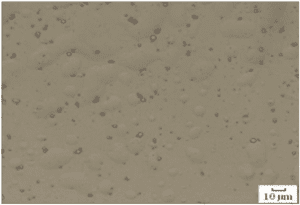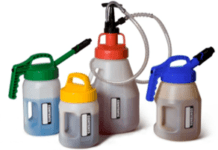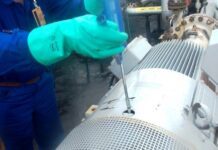
Marcos Thadeu Lobo
Mechanical Engineer Graduated from the State University of Campinas (Unicamp). He currently works as an Associate Consultant at QU4TTUOR CONSULTORIA.
Care of Injection Systems
- NECESSARY CARE WHEN TRANSFERRING, STORAGE AND DISPOSAL OF FUEL
1.1. Weekly draining of fuel storage tanks to remove decanted water and sludge.
1.2. Internal cleaning of fuel storage tanks, at most, every 05 years to remove sediment.
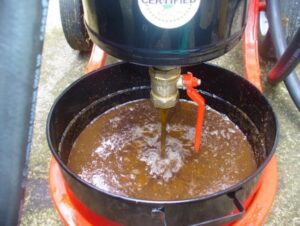
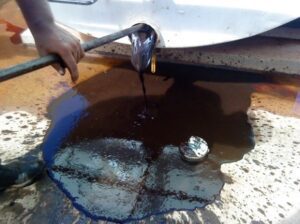 Images 1/2 – Draining and cleaning fuel storage tanks.
Images 1/2 – Draining and cleaning fuel storage tanks.
1.3. Maintain, if possible, routine drainage of fuel tanks “on-board” of mobile equipment: weekly in environments with a lot of dust in suspension and every 03 months under normal conditions.
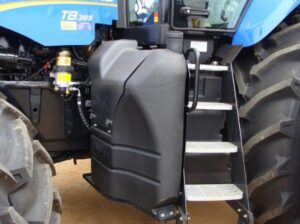
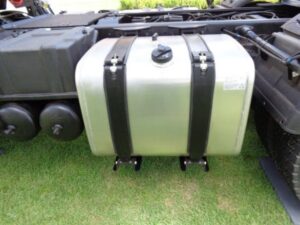 Images 3/4 – Si es posible, drene los tanques de combustible a bordo.
Images 3/4 – Si es posible, drene los tanques de combustible a bordo.
1.4. Keep the fuel dispensing nozzles and filler nozzles clean.
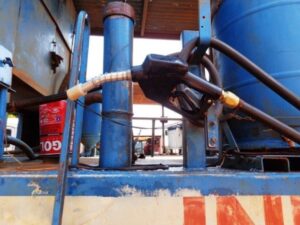
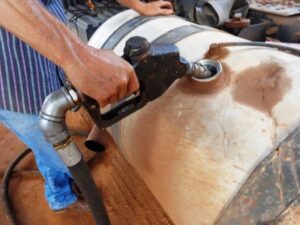 Images 5/6 – Keep the dispensing and filling nozzles clean..
Images 5/6 – Keep the dispensing and filling nozzles clean..
1.5. Keep hoses, gaskets, seals, etc., bulk fuel storage tanks and fuel transfer and dispensing pumps in good condition and clean.

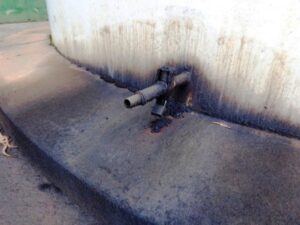 Images 7/8 – Keep the storage tanks, filtration system, fuel handling and dispensing in good condition.
Images 7/8 – Keep the storage tanks, filtration system, fuel handling and dispensing in good condition.
1.6. Use a filtration system for each fuel movement carried out, such as: from the fuel storage tank to the supply train; the supply train for the on-board fuel tank of the mobile equipment; from the fuel dispensing pump to the mobile equipment’s on-board fuel storage tank; from tank truck to bulk fuel storage tank.
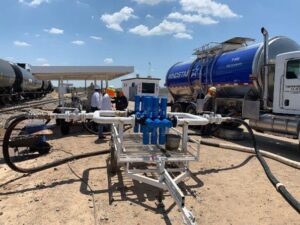
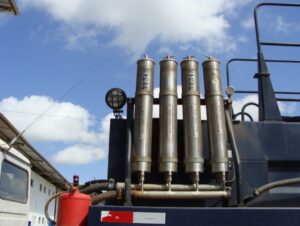 Images 9/10 – Filtration with every fuel movement.
Images 9/10 – Filtration with every fuel movement.
1.7. Do not use open containers for handling fuel.

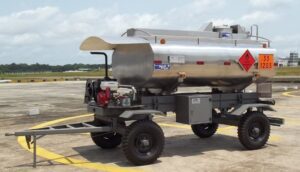 Images 11/12 – Fuel must be transported in closed containers.
Images 11/12 – Fuel must be transported in closed containers.
1.8. Purchase fuel from reliable suppliers and carry out quality tests before unloading the tanker ( CT ).
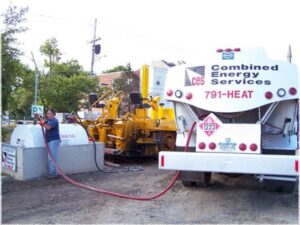
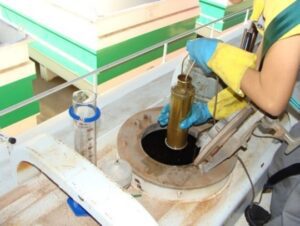 Images 13/14 – Carry out quality tests prior to CT discharge.
Images 13/14 – Carry out quality tests prior to CT discharge.
1.9. Promptly repair any fuel leaks.
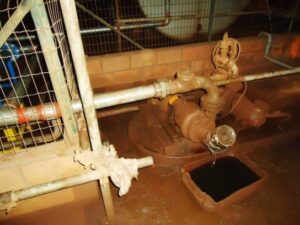
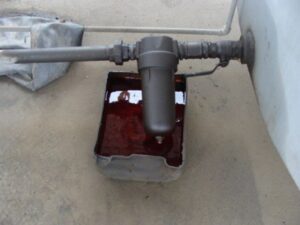 Images 15/16 – Repair fuel leaks as soon as possible.
Images 15/16 – Repair fuel leaks as soon as possible.
1.10. Use desiccant filter and for solid particulate material in vent of bulk fuel storage tanks and supply trains.
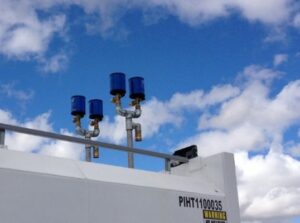
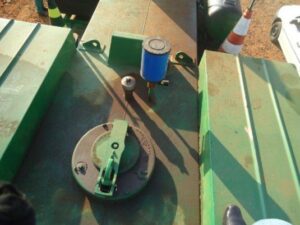 Images 17/18 – Desiccant filter and for particulate matter in vent.
Images 17/18 – Desiccant filter and for particulate matter in vent.
1.11. Never operate mobile equipment without the on-board fuel tank filler cap and, if possible, install a protective cap over the filler cap.
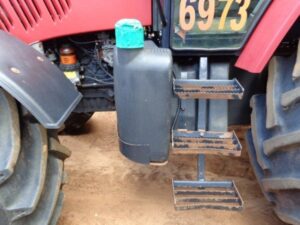
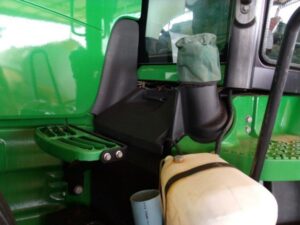 Images 19/20 – Do not operate mobile equipment without the on-board fuel storage tank filler cap.
Images 19/20 – Do not operate mobile equipment without the on-board fuel storage tank filler cap.
1.12. If the filler cap on the mobile equipment’s onboard fuel storage tank is not providing a proper seal, replace it immediately.
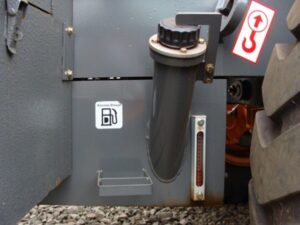
 Images 21/22 – The filler caps must provide adequate sealing. If this is not happening, change it immediately.
Images 21/22 – The filler caps must provide adequate sealing. If this is not happening, change it immediately.
- REPLACEMENT OF ON-BOARD FUEL FILTERS
2.1. Follow the regular on-board fuel filter replacement program recommended by the OEM in the preventive maintenance program.
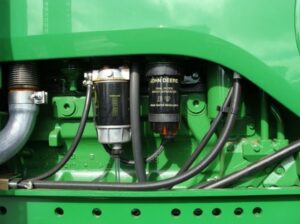
 Images 23/24 – Follow the replacement frequency recommended by the OEM.
Images 23/24 – Follow the replacement frequency recommended by the OEM.
2.2. Keep fuel filters “on-board” in the original sealed packages until use.
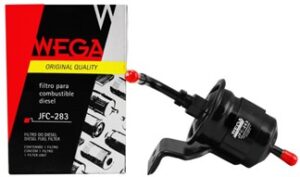
 Images 25/26 – Keep the filter in the original packaging until use.
Images 25/26 – Keep the filter in the original packaging until use.
2.3. Do not pre-fill the new fuel filter since, when performing this operation, a certain volume of unfiltered fuel will be sent to the injection system.
 Image 27 – Fuel without proper filtration: the main cause of failure in injection systems.
Image 27 – Fuel without proper filtration: the main cause of failure in injection systems.
2.4. Try to use “on-board” fuel filters of assured quality in order to maximize the protection of the injection system.o.
 Images 28/29 – Using quality assured on-board fuel filters prolongs the service life of the injection units.
Images 28/29 – Using quality assured on-board fuel filters prolongs the service life of the injection units.
- CARE TO BE TAKEN WHEN CARRYING OUT MAINTENANCE SERVICES IN INTERNAL COMBUSTION ENGINES DIESEL CYCLE 4T
3.1. Remove residues from the internal combustion engine compartment Diesel 4T cycle before removing the “on-board” fuel filters and other components of the injection system.

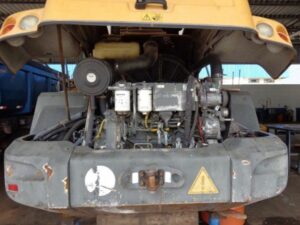 Images 30/31 – Clean the engine compartment before any maintenance on the injection system.
Images 30/31 – Clean the engine compartment before any maintenance on the injection system.
3.2. In mobile off-road equipment it is suggested to use high pressure water jet to remove dirt accumulated in the internal combustion engine Ciclo Diesel 4T before removing the head or crankcase for repairs.

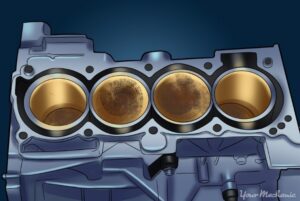 Images 32/33 – Flush engine with water jet before removing head.
Images 32/33 – Flush engine with water jet before removing head.
3.3. Tighten the plugs or caps securely (eg cooling system compensation reservoir; lubricating oil filler cap; crankcase drain plug) during maintenance operations, even if the repair is only for a short period of time.
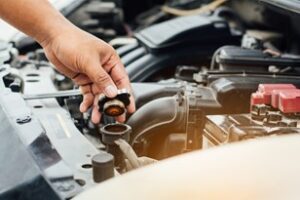
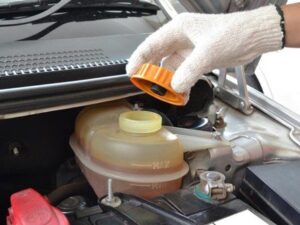 Images 34/35 – Caps and plugs tightened securely during maintenance.
Images 34/35 – Caps and plugs tightened securely during maintenance.
3.4. Reusable parts must be cleaned with a suitable solvent and carefully dried.
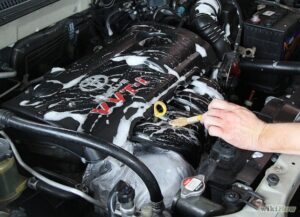
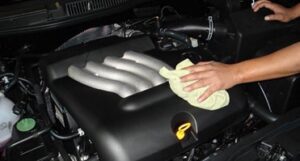 Images 36/37 – Reusable parts must be cleaned with a suitable solvent and carefully dried.
Images 36/37 – Reusable parts must be cleaned with a suitable solvent and carefully dried.
3.5. Keep new parts in their original packaging until they are used.
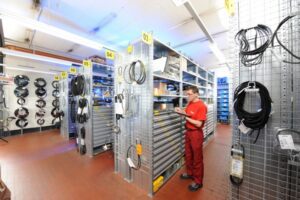
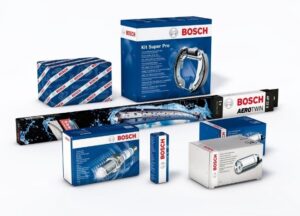 Images 38/39 – New parts in box until use.
Images 38/39 – New parts in box until use.
3.6. Do not leave new or removed parts during the disassembly operation and stored in conditions of use, even temporarily, on the workshop floor or on benches that are not properly cleaned.
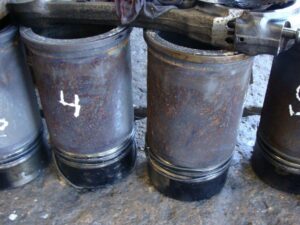
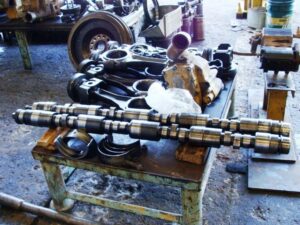 Images 40/41 – Parts must be stored in suitable places.
Images 40/41 – Parts must be stored in suitable places.
3.7. Fuel injection system components should only be handled with suitable gloves. Never with bare hands.

 Images 42/43 – Wear suitable gloves when handling fuel injection system parts.
Images 42/43 – Wear suitable gloves when handling fuel injection system parts.
3.8. Seals, when removed from the Diesel 4T Cycle internal combustion engine, must not be reused and must be replaced with new and unused ones.
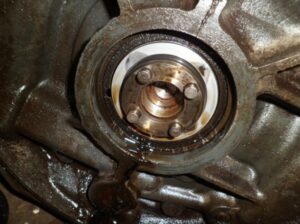
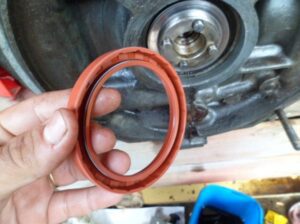 Images 44/45 – Damaged seals must be replaced with new ones.
Images 44/45 – Damaged seals must be replaced with new ones.
3.9. Regular visual inspection should be performed at the fuel line connections connecting the mobile equipment on-board fuel tank to the high pressure fuel pump for early detection of fuel leaks.

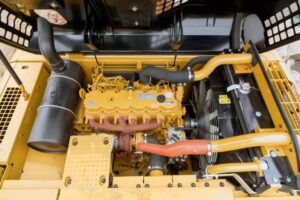 Images 46/47 – Regular visual inspection for early leak detections
Images 46/47 – Regular visual inspection for early leak detections
The use of an adequate fuel filtration system (Oil Road Diesel B S500/B S10; OC A1; Marine Diesel Oil DMA/DMB; OCM 120/180/380) is of vital importance in ensuring the General Cleanliness Level in modern systems of fuel injection used in Diesel Cycle 4T internal combustion engines, such as the Common Rail type, which are very sensitive to the presence of abrasive solid particulate material and water due to the tiny dynamic clearances of the components in relative motion and level surface finish of machined metal surfaces.
Saving on fuel filtration system is sure to increase unavailability of mobile equipment due to failures in fuel injection systems.
Images 48/49 – Solid particulate matter and water: enemies to be eliminated





